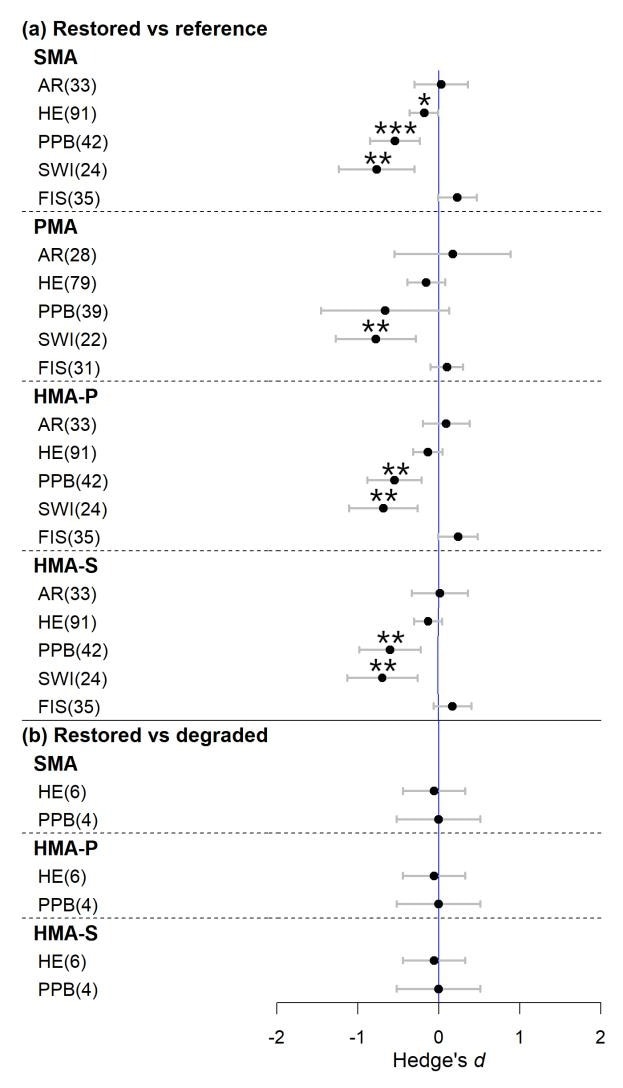Widespread human disturbance has ended up causing serious negative genetic consequences for wild plants around the world, such as a decline in intraspecific genetic diversity, which is likely to jeopardize individual survival and population persistence.

Effect sizes (Hedge’s d; restored vs. reference (a); restored vs. degraded (b)) and 95%-CIs of genetic diversity and inbreeding coefficient (FIS) based on standard (SMA), phylogenetic (PMA), and hierarchical (HMA; P, paper; S, species) meta-analyses. (AR, allelic richness; HE, expected heterozygosity; PPB, percentage of polymorphic bands; SWI, Shannon-Wiener index; parentheses, number of data points; vertical blue line, Hedge’s d = zero). Image Credit: Wuhan Botanical Garden.
In several types of ecosystems, ecological restoration has been extensively practiced. But it is yet to be clearly understood if and to what extent ecological restoration has recovered the genetic diversity of plant populations.
For this knowledge gap to be filled, Dr Xinzeng Wei and his collaborators from the Wuhan Botanical Garden of the Chinese Academy of Sciences collected a global dataset to make a comparison of the genetic diversity between restored and reference or degraded populations and explored the basic drivers, like restoration strategies and species characteristics.
In restored populations, genetic diversity was considerably lower compared to reference populations and was also comparable to that in degraded populations. The inbreeding coefficient was constantly comparable between restored populations and reference or degraded populations.
Ecological restoration efficiently improved the genetic diversity of herb species but not woody species, and grassland but not forest ecosystems.
Passive restoration instead of active restoration, seeding rather compared to planting, and populations restored with mixtures from various donor populations instead of a single source population all considerably improved the genetic diversity of restored populations.
The genetic diversity of restored populations was equivalent to the reference population when the restoration time was almost ≥50 years. However, was considerably lower compared to the reference populations when the restoration time was <50 years.
For enhancing genetic diversity in restored populations, the scientists made the following recommendations. Genetic diversity recovery must not be treated not only as a co-benefit of ecological restoration, along with other targets, but as a main goal in future ecological restoration with plant species.
Besides, suitable strategies must be adopted to enhance and retain genetic diversity in restored populations and to decrease genetic risk and resource use.
Furthermore, genomic approaches, like population genomics, must be utilized to enhance seed sourcing, assessment, and tracking of restoration efforts.
Source:
Journal reference:
Wei, X., et al. (2023) Impacts of ecological restoration on the genetic diversity of plant species: A global meta-analysis. Journal of Applied Ecology. doi.org/10.5061/dryad.j3tx95xkn.